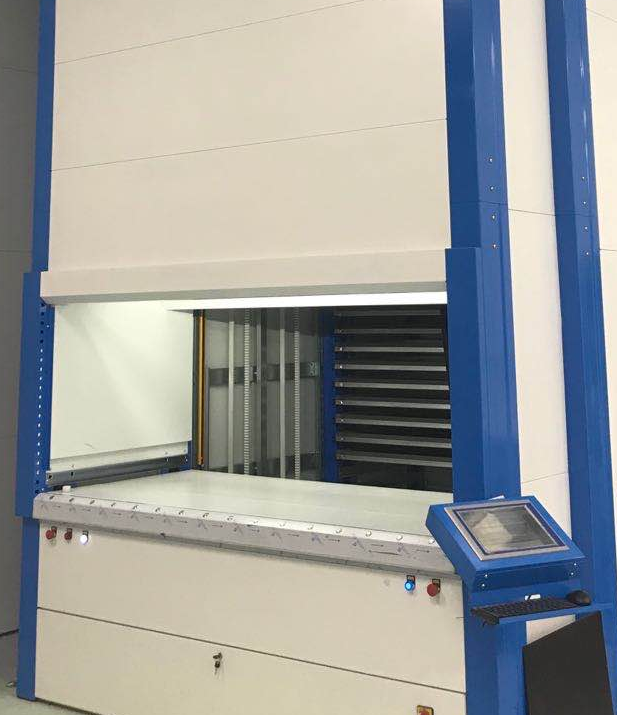Difference between vertical carousels and vertical lift modules
Vertical carousels and vertical lift modules (VLMs) are two types of automated storage and retrieval systems (AS/RS) used in warehouses and other storage environments. Both systems are designed to optimize storage space, reduce picking time, and increase efficiency. However, there are significant differences between the two systems that make each better suited for different applications.
Vertical Carousels:
Vertical carousels are cylindrical units with shelves that rotate around a track in response to user inputs. They typically have a height range of between 8 and 30 feet and can store a variety of items. When an operator needs to retrieve an item, they input the item’s location into a control panel or barcode scanner, and the carousel rotates until the item is brought to the access point.
Benefits of vertical carousels:
- Speed: Vertical carousels can offer quicker picking times than traditional shelving or bin systems because they bring the items to the operator rather than forcing the operator to move to the items.
- Space-saving: Vertical carousels are designed to operate in limited spaces and can store a large number of items in a single unit.
- Ergonomics: Because vertical carousels bring items to the operator, the operator doesn’t need to bend, reach, or stretch to retrieve an item, reducing the risk of overexertion injuries.
Vertical Lift Modules (VLMs):
Vertical Lift Modules (VLMs) are like safes that store items on shelves that move up and down inside the module. VLMs are typically around 20 to 50 feet tall and can store a wide variety of items. When a user needs to retrieve an item, they input the location information into the system’s control panel or barcode scanner, and the module moves the appropriate shelf to the access point.
Benefits of vertical lift modules:
- Space-saving: VLMs save floor space in comparison to traditional shelving or bin systems because the height of the VLM can be utilized to store more items. Save floor space can reduce rent and operating expenses.
- Fast function: VLMs storage and retrieval speed allows for fewer operators to handle more orders
- Precision moving: VLMs are designed to move at precise increments which reduces the chance of property damage during a retrieval.
Differences:
- Storage density: VLMs leverage the vertical space more efficiently than vertical carousels. In many cases, VLMs provide two or more times the storage density of vertical carousels.
- Item weight ranges: Vertical carousels have a weight capacity up to 2000lbs per carousel, while VLMs are capable of handling much heavier payloads than vertical carousels.
- Access time: VLM systems can handle extremely fast access times, while vertical carousels tend to be slower. Vertical carousels bring the requested items to the operator by rotating, while VLMs bring the shelf holding the items down to the operator.
- Variety of control systems: VLMs may be equipped with several control systems, including multiple positioning from the front and rear of the module, sliding shelf trays for greater throughput, and unit access through an upper-level work platform.
Conclusion:
While both Vertical lift modules and Vertical carousels offer space-saving and significantly improve warehouse picking efficiency, VLMs are more suitable for heavy-duty material handling such as automotive, hardware, or pharmaceuticals because of the higher capacity and faster-access systems it provides. On the other hand, Vertical carousels are more suitable for smaller items, faster order picking, or when multiple carousels are required to store items in smaller floor spaces.

